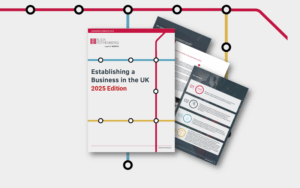Tax Q&A: Construction Industry Scheme and position for buy-to-let
Many buy-to-let landlords may have never heard of the Construction Industry Scheme (CIS) or have assumed that they might need to register for it. Robert Salter explains how it works.
Q. Can you give me some background on the Construction Industry Scheme (CIS)?
The CIS is a system that is designed to try and eliminate tax evasion within the building and construction arena. CIS has been around since the early 1970s, but the present arrangements date from 1999.
Under the CIS arrangements, ‘building contractors’ are obliged to deduct monies — in effect withholding taxes — from the invoices that they receive from their subcontractors and transfer these payments to HM Revenue & Customs (HMRC). These transfers from the contractor represent an advance payment of the tax (and NICs) due for that subcontractor.
In simple terms, building contractors are obliged to register for the scheme and account for withholdings on the invoices they receive from subcontractors. There is no equivalent obligation on subcontractors — they don’t have to be CIS-registered. However, if they are not CIS-registered, the building contractor will need to operate a higher rate of withholding tax on their invoices (30% rather than the regular 20%). For CIS purposes, a building contractor includes directly self-employed people, business partnerships or limited companies.
Q. So who is a building contractor?
For example, are all buy-to-let landlords automatically obliged to register as ‘building contractors’ under CIS? Thankfully, the answer is ‘no’. Many smaller buy-to-let landlords would not be caught by the CIS arrangements. However, landlords can be liable to the CIS in some scenarios including:
a) Larger buy-to-let landlords would be caught by the arrangements automatically, if they (or the business that they own, if they are operating through a limited company), spends more than:
- £3m on construction services in a 12-month period; or
- £1m on average per annum over a rolling three-year period.
b) The buy-to-let landlord is also undertaking duties as a building contractor and is paying subcontractors for building-related work. This could be the case, for example, where a builder works as a regular, self-employed builder but also has a few properties they have purchased and developed and now let out to tenants.
It should also be noted that – depending upon the exact arrangements which exist for any particular project – it is possible for someone in the building and construction industry to be both a building contractor and a subcontractor at the same time. In such cases, the business would need to register as a building contractor where it is hiring subcontractors and can chose to register as a subcontractor under CIS at the same time.
Q. So what is building-related work per the CIS regulations?
In this regard, building-related work would include:
- Site preparation;
- Demolition work and similar activity;
- Building work;
- Repair & maintenance work;
- Decorating of buildings;
- Post-building clear-up; and
- Internal fittings and fixtures (lighting, gas, water, lifts etc).
Equally, it is worth noting that a number of areas, which might in some situations be colloquially thought of as building or construction services, are specifically outside the CIS regulations. These include architectural services, carpet fitting, scaffolding hire and site-based activities which are clearly unrelated to construction (e.g., a café on site).
Q. So are any of my clients caught by CIS?
Firstly, it is worth remembering that you may find that some of your ‘non-property and construction clients’ are caught by the CIS regulations. For example, you may find that you have retail-based clients who are caught by the need to register for CIS because of the amount they spend on expenses each year.
Moreover, it is important to note that the definition of whether someone is a ‘building contractor’ is, under HMRC’s guidance, very wide-ranging — it can literally be “a business or other concern that pays subcontractors for construction work”. While private householders are specifically excluded from the CIS arrangements, there is no such automatic exemption for buy-to-let landlords.
In reality, smaller landlords with one or two properties, decorating them directly and then having these directly let out and managed by a letting agent with all repair costs paid for by the letting agent initially, should not be caught by CIS — they will just be held to be ‘private investors’ — more active buy-to-let landlords may be considered building contractors for CIS purposes even where the relevant expense thresholds are not met.
Q. Penalties, anyone?
Contractors/subcontractors who aren’t registered for CIS (or do not operate the system correctly), will be, as one should expect, subject to interest and penalty charges. These potential CIS penalties mirror those which arise for PAYE. As such:
- The first missed payment is ignored;
- Where there is up to three late payments during a year, the penalty is 1% of the total amount defaulted;
- For between four and six missed payments, the penalty is 2% of the total defaulted amount; and
- Between seven and nine missed payments results in a penalty of 3% of the total defaulted amount; and
- 10 or more defaulted payments results in a 4% penalty of the total defaulted amount.
Additional penalties arise where payments are still outstanding for six or 12 months.
Q. Are there any final points for an adviser to consider?
As well as considering whether any of your clients are caught by CIS, it is also important for advisers to assess whether:
a) Any of your buy-to-let clients may be directly employing the staff who are working on building project; or
b) If such workers are operating through their own personal service companies and their deemed employment status needs to be assessed under the IR35 regulations.
In this regard, advisers should note that the employment regulations trump the CIS scheme. Hence if a worker is deemed an employee, PAYE and NICs should be applied by the buy-to-let landlord.
Would you like to know more?
If you would like to discuss any of the above, please get in touch with Robert Salter using the details on this page.

You may also be interested in

Ele Theochari has been appointed as Vice President of The Association of Taxation Technicians

Retailers Both Online and High Street Struggle Amid Rising Staffing Costs













